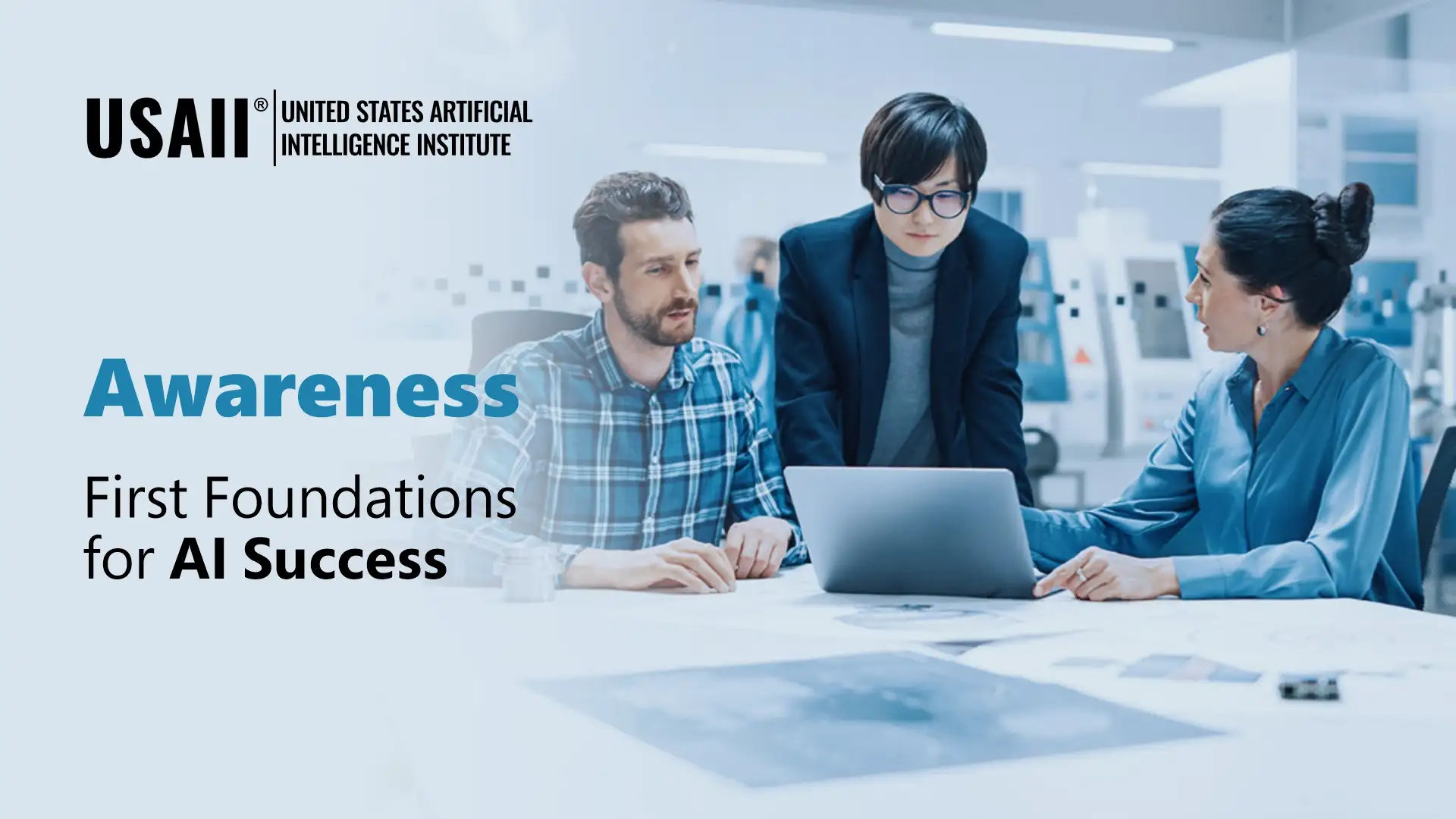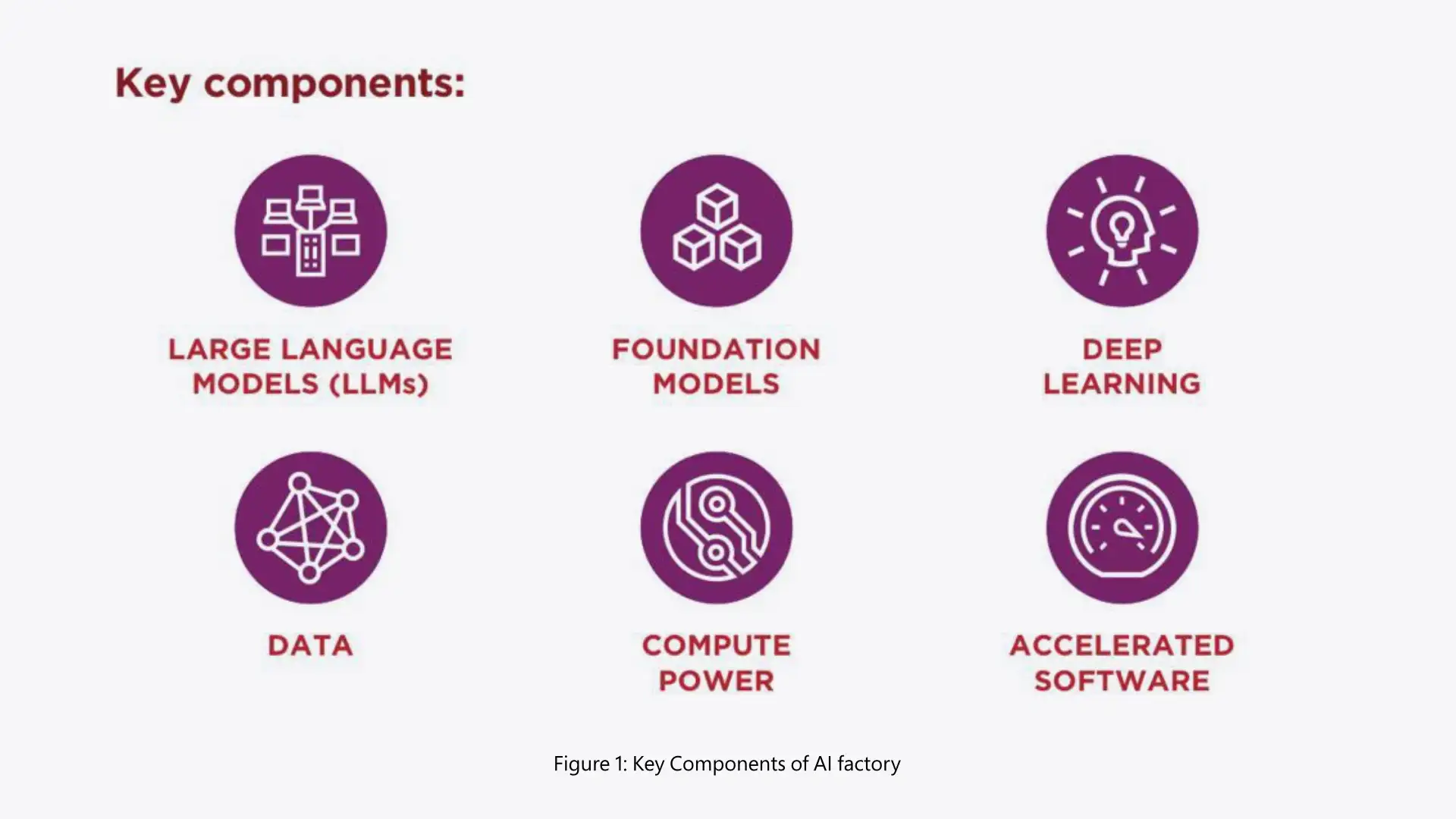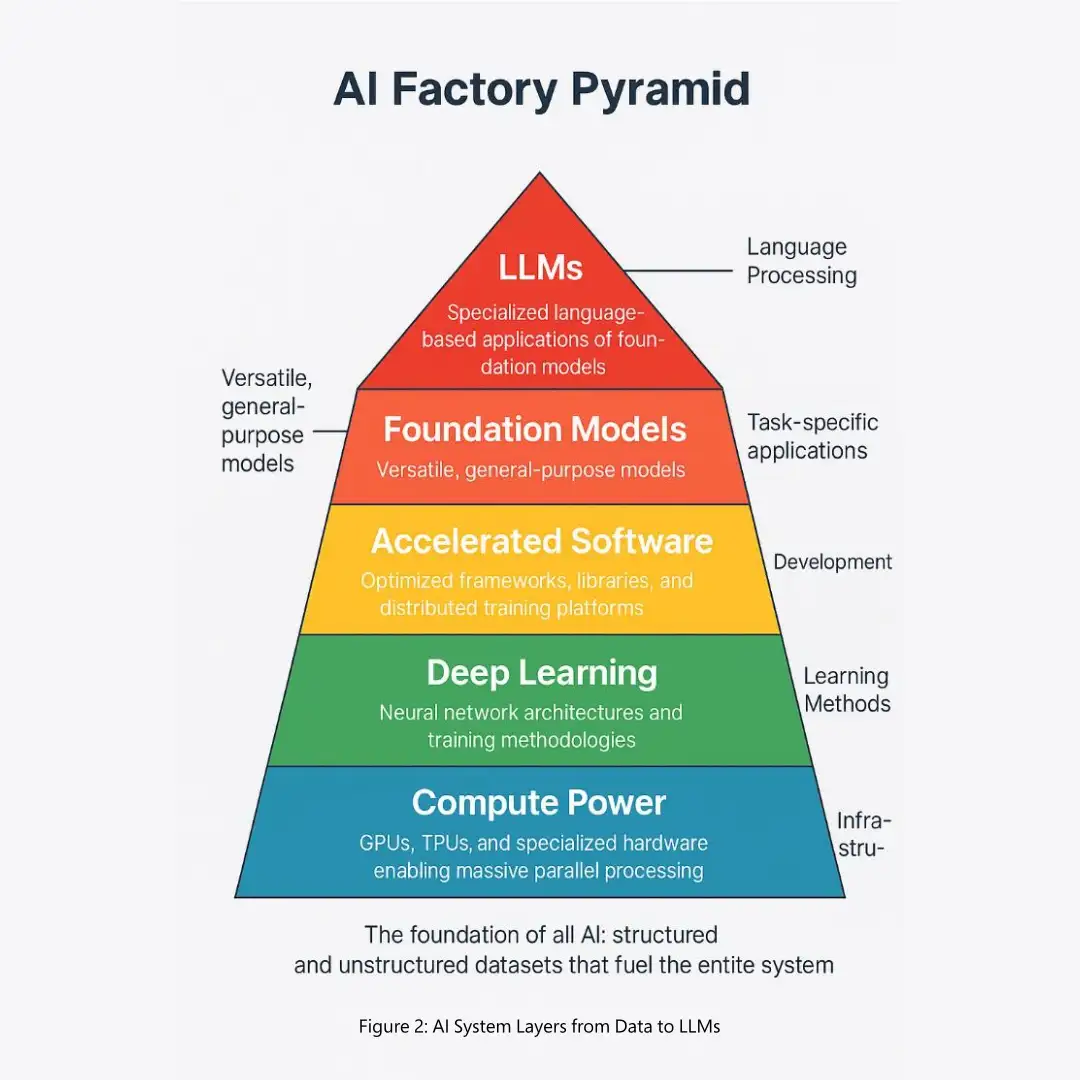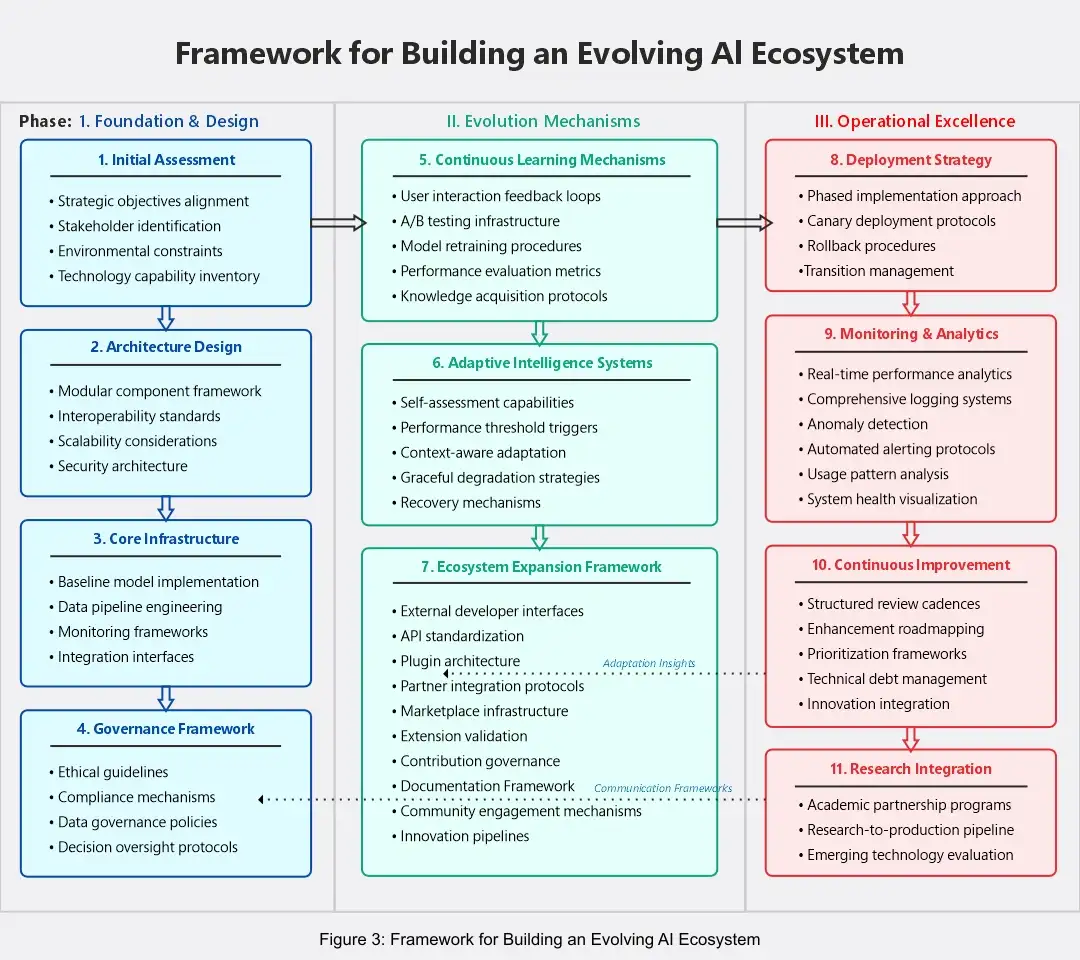
Introduction - The Awareness Gap: Beyond the Chatbot
Many people’s perception about artificial intelligence, and you will likely hear about chatbots, voice assistants, or those AI tools that whip up instant images or clever content. It is what is trending, what is visible, and what is viral. And while those tools are useful, they are just scratching the surface.
This narrowed perception has created a significant gap, not in technical capability, but in awareness. Many business owners, decision-makers, CXOs, Board Members, and even tech professionals remain unaware of the broader landscape of AI’s potential impact, especially when it comes to embedded intelligence, autonomous operations, and agentic systems that drive decisions and actions across value chains.
Therefore, in this note, I would like to share my perspective and draw attention to what I believe is a crucial pillar in the AI ecosystem play which is the “AI Factory.” It is not just a concept, but a foundational enabler that I see driving more meaningful and scalable use cases across industries and verticals, helping shift the focus from AI as hype to AI as impact.
From Pilot to Payoff: Making AI Work for Real Business Value
AI today is widely misunderstood. People see the results of language models and assume all AI must be conversational. But AI is not just about generating responses and executing some mundane tasks. It is about creating smarter ways to make decisions, faster ways to react to change, and deeper ways to understand customers, markets, operations and for tangible ROI.
Behind the scenes of a high-performing AI-driven business is an infrastructure of interconnected tools, data flows, and decision engines working silently.
Unfortunately, when leaders and professionals don’t see full AI capability, AI gets stuck in demos, pilot projects and wrongly integrated to the existing ecosystems. It will remain as a conceptual and organization will be left behind or spend multi-fold to do a catch-up.
Another common misconception about AI is that it is too expensive and unlikely to deliver a meaningful return on investment. But the reality is, when AI is implemented thoughtfully which aligned with real business needs and supported by the right processes, it pays off significantly, not just in cost savings but in long-term value creation.
The AI Shift: Moving Beyond Demos to End-to-End Business Transformation
To move from concept or pilot to real world implementation, businesses must shift how they think about AI. It is not just about adding intelligence to one part of the company, it is about building it into the most demanding sectors or areas how things get done.
Business and product owners need to take a step back and look at the entire value chain not just isolated tasks if they want to truly unlock the benefits of AI. By offloading repetitive, non-creative work to intelligent systems, they free up time and space for strategic thinking while also boosting accuracy, consistency, and quality. Regardless of the industry or vertical, AI can be a powerful ally in making smarter decisions and elevating overall performance.
This is where the real evolution happens. We are no longer talking about bots that answer FAQs. We are talking about AI that detects anomalies before they create problems. AI that helps manage supply chains. AI that suggests what your team should do next. AI in healthcare is being used to enhance diagnostic accuracy through medical imaging analysis, enabling early detection of conditions such as cancer and neurological disorders. Additionally, predictive analytics powered by AI supports personalized treatment plans by forecasting patient outcomes based on clinical and historical data. And most importantly, AI that acts and not merely thinks or execute in a contained manner.
But all of this requires more than a few models and a data scientist. It needs a system. A repeatable, scalable, and sustainable setup that can deliver insights and actions consistently across the board.
From Data to Decisions: Inside the AI Factory
Consider the AI Factory to be the operational engine that drives an intelligent organisation. It is where ideas become practical solutions and experimenting becomes implementation.
The components of an effective AI Factory include:
To highlight its importance, workflow design deserves special attention that it is not merely a supporting feature of the AI Factory, it is the backbone that brings everything together. Without well-structured workflows, even the most advanced models or predictions risk sitting idle, unused, or misunderstood. Workflows translate AI outputs into real-world actions, ensuring that insights flow smoothly into business systems, frontline tools, or automated processes. For example, in healthcare, an AI model may detect early signs of a stroke from imaging data, but without a responsive workflow that alerts medical staff, routes the patient, and initiates treatment protocols, that insight is lost. When workflows are thoughtfully designed and embedded into daily operations, AI becomes more than intelligent for it to become impactful, practical, and trusted.
When these components come together, you are no longer running experiments. You are running an intelligent business. The figure below represents all layers of AI factory where it has all the core components of AI, Machine Learning, Deep Learning, Data, Compute Power, Foundational models, Accelerated Software (3rd party ecosystems) and LLMs.


The AI Factory Pyramid illustrates the layered foundation of AI systems, starting from raw data and compute infrastructure up to deep learning, foundation models, and LLMs. Each layer builds upon the one below it to enable increasingly sophisticated and specialized AI capabilities.
Beyond the Model: Empowering Teams for AI-Driven Change
From my perspective, a significant difficulty in implementing AI is determining its appropriate integration inside current corporate ecosystems. Although technology is a factor, the primary obstacle frequently resides in the human aspect. Namely, lack of pertinent skill sets and organization wide awareness. Without individuals who comprehend both the commercial and technological aspects, it is challenging to design effective solutions, promote adoption, or amplify impact. The difficulty is imposed by the lack of reference designs, enterprise grade full pledge platforms, and matured workflows, hindering organisations from progressing beyond experimentation to have a success stories from AI implementation.
To address this, we must enhance the human aspect of AI:
Spreading and developing the necessary task force and skillsets will be a challenging effort, but it promises to be a highly rewarding journey for the entire value chain once AI is understood and its outcomes are realized.
AI at the Core: Making Every Business Unit Smarter, Faster, Better
Attaining genuine AI maturity requires the development of systems that improve continuously. Your whole business becomes more responsive, forecasts are more accurate, and actions are expedited. AI turns into a silent partner that is constantly there, learning, and assisting. A transformation like that does not just happen. Instead of depending on chance or hero teams, it is constructed by method, perseverance, and a factory approach.

AI Done Right: From Cross-Functional Teams to 84% Success at Launch
In my experience leading AI transformation at a major telecommunications company, I witnessed first-hand how easily AI initiatives can lose traction when they are treated as peripheral experiments rather than strategic priorities. We were entrusted with modernizing a large-scale system which valued at RM200 million (CAPEX) and while the journey was complex, we delivered as a team.
Our success was not simply driven by technology as it came from clear alignment, business goals to measurable outcomes, assembled cross-functional teams, and focused on practical, high-impact use cases. Most importantly, we designed systems that could evolve with the business.
The result was an 84% success rate at launch, exceeding expectations and earning full support from the board. That experience reinforced a key lesson: AI transformation is not just about building models, it is about building momentum. And it is precisely that confidence, drawn from hands-on results, that fuels our belief in deploying fully functional AI ecosystems as the next step forward.
AI That Works: Why Workflow Design Matters More Than You Think
One part of AI transformation that often gets overlooked is workflow design. You can have all the insights and predictions in the world, but if they just sit in a dashboard, they won’t change much.
Workflows are what turn those insights into action. They help systems know what to do next, who needs to be informed, and how to respond when things change. When AI is paired with smart, well-thought-out workflows, it shifts from being just impressive to being genuinely useful.
Today’s workflows are much more flexible, they can adjust in real time, escalate issues, personalize responses, and get things moving without needing someone to intervene at every step. But without a solid plan behind them, AI can actually make things more complicated than they need to be.
That is when you end up with something that looks great on paper but does not hold up in the real world, what I call the “white house effect.” With the right workflow strategy, though, AI stays grounded, makes sense to the people using it, and delivers real value.
Built with Intelligence: The New Blueprint for AI-First Enterprises
Firstly, moving ahead should not be only about embedding AI onto old systems without appropriate due diligence as an afterthought, but it is about reimagining those systems with intelligence built in from the ground up for overall gains and to achieve the intended ROI.
Secondly, shaping the AI-native business of tomorrow means rethinking every process, decision, and interaction around intelligence where adaptability is built in, insights flow effortlessly into action, and technology quietly empowers people to do their best work.
Lastly, an AI powered business is not defined by the tools it uses, but by how seamlessly intelligence is embedded into its DNA where decisions are faster, experiences are smarter, and innovation becomes second nature rather than a special project.
Final Thought
At its core, the greatest obstacle to AI adoption is not the technology but rather the lack of knowledge on where artificial intelligence actually belongs and how to apply it. Too sometimes, we become swept up in the enthusiasm and neglect to concentrate on what truly counts; resolving genuine issues by means of realistic use cases, and creating processes that transfer those answers into daily labour. A well-built AI factory or platform is about improving life, wise decisions, and team strength not only about models or tools. Done correctly, artificial intelligence helps rather than replaces people, so enabling them more time to lead, create, and think. We should strive for a future like that one in which artificial intelligence enables people to flourish rather than vanish.
Follow us: